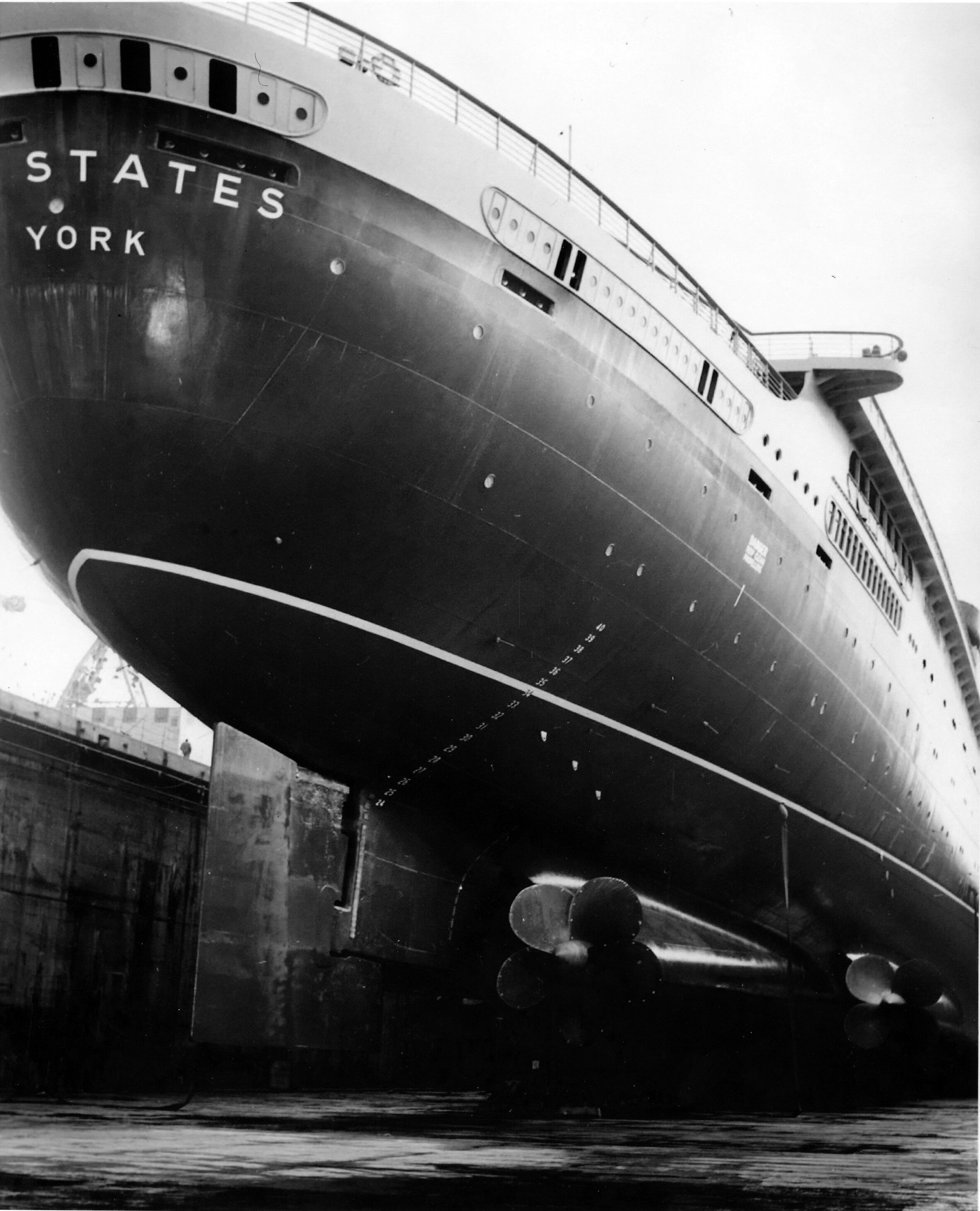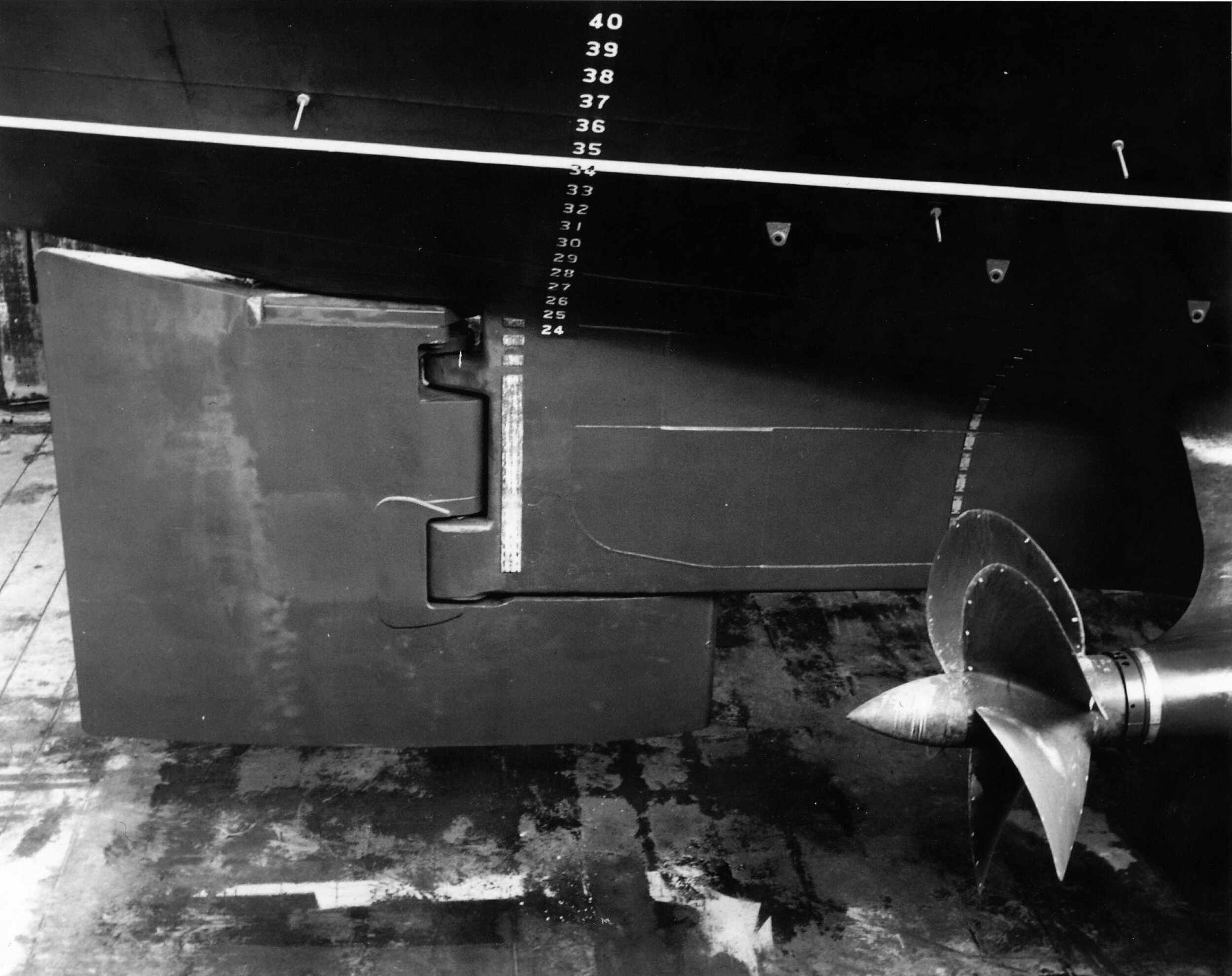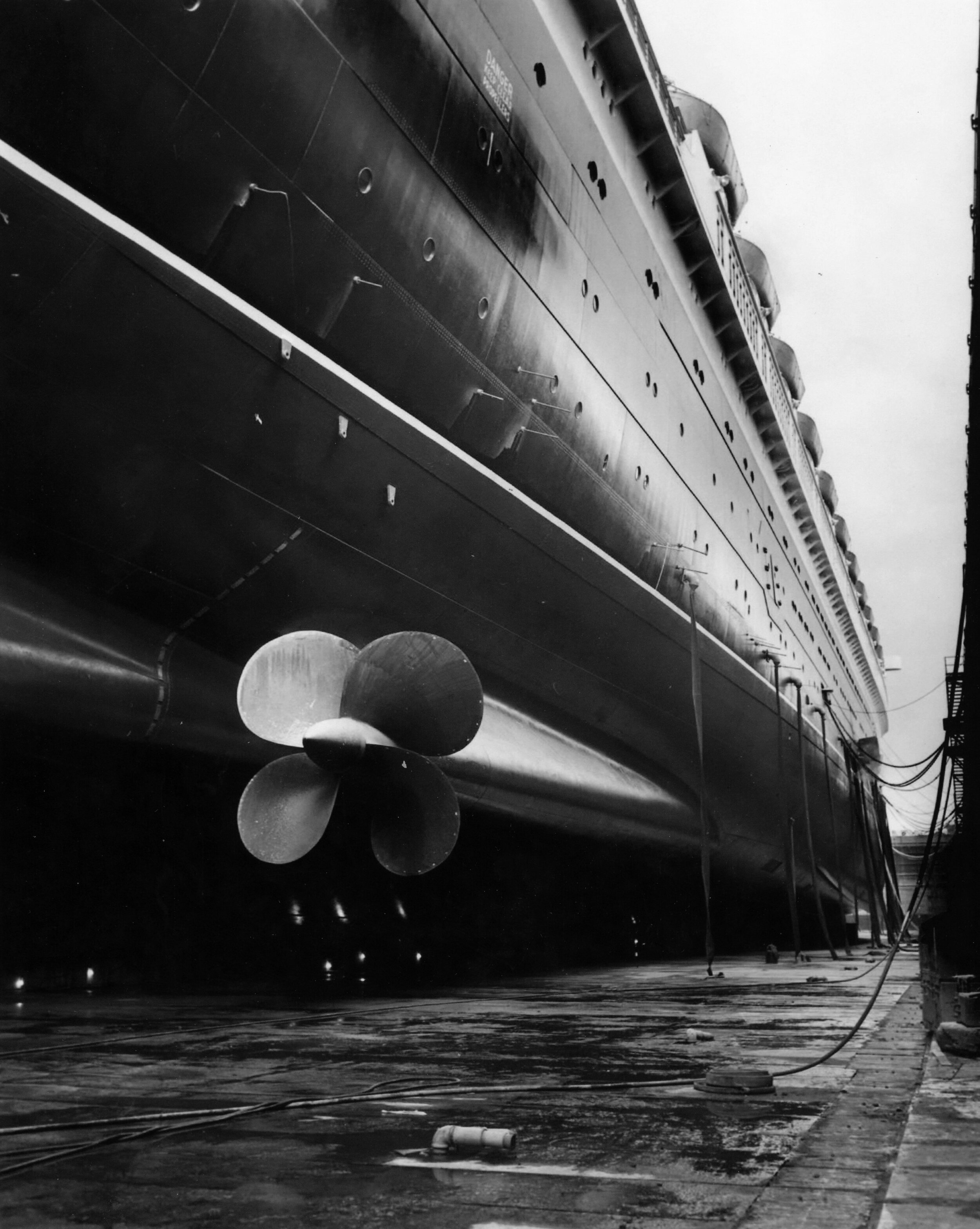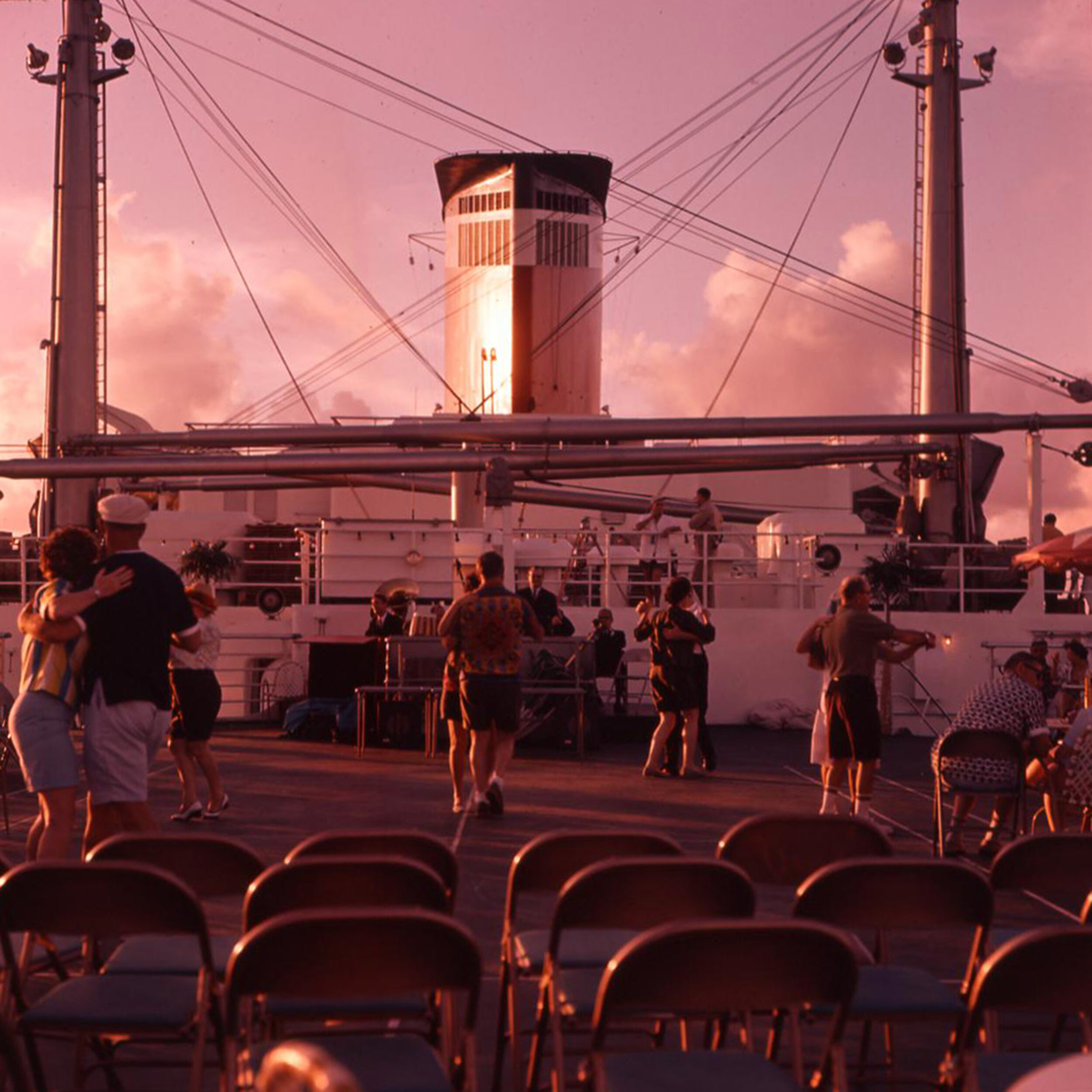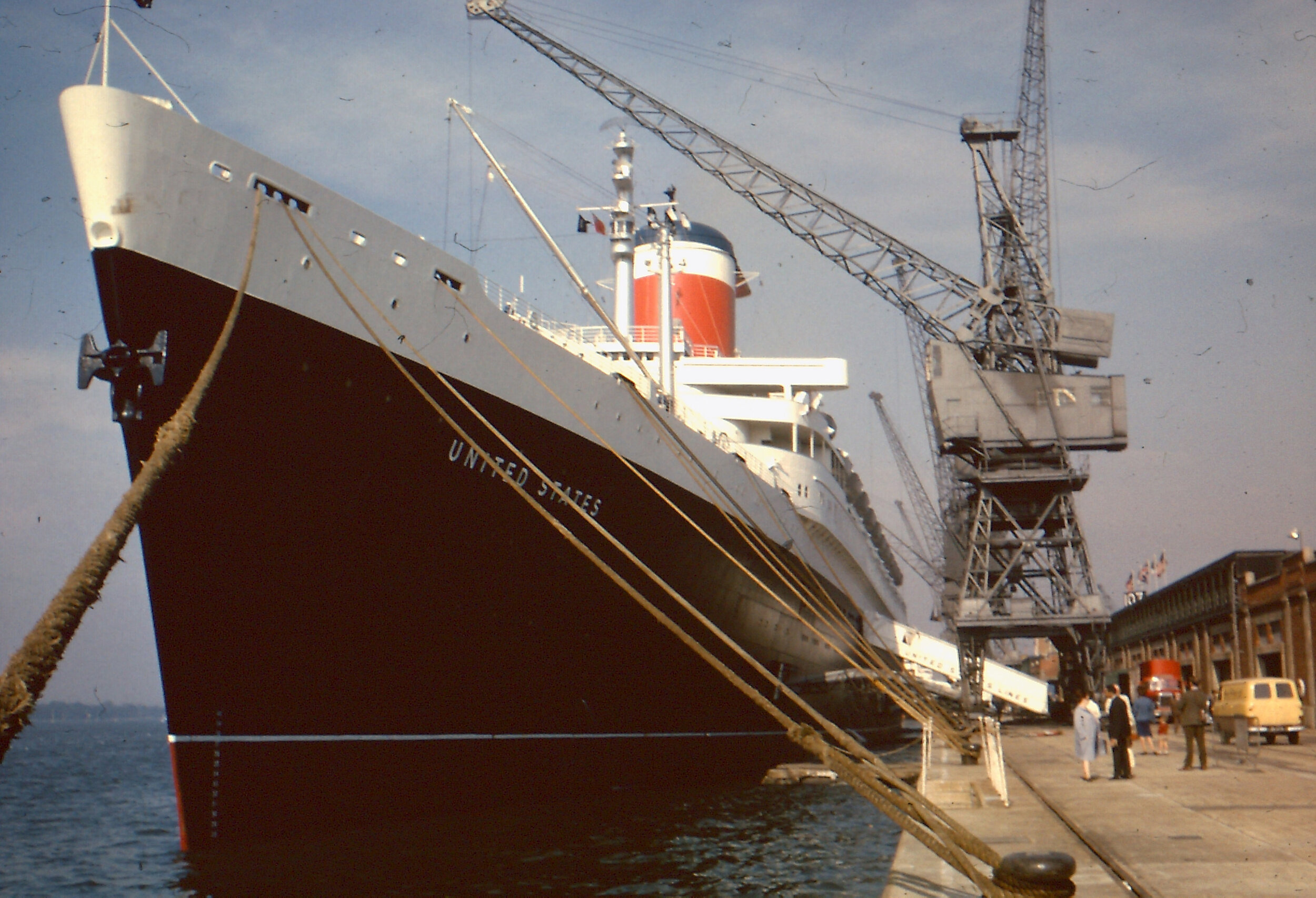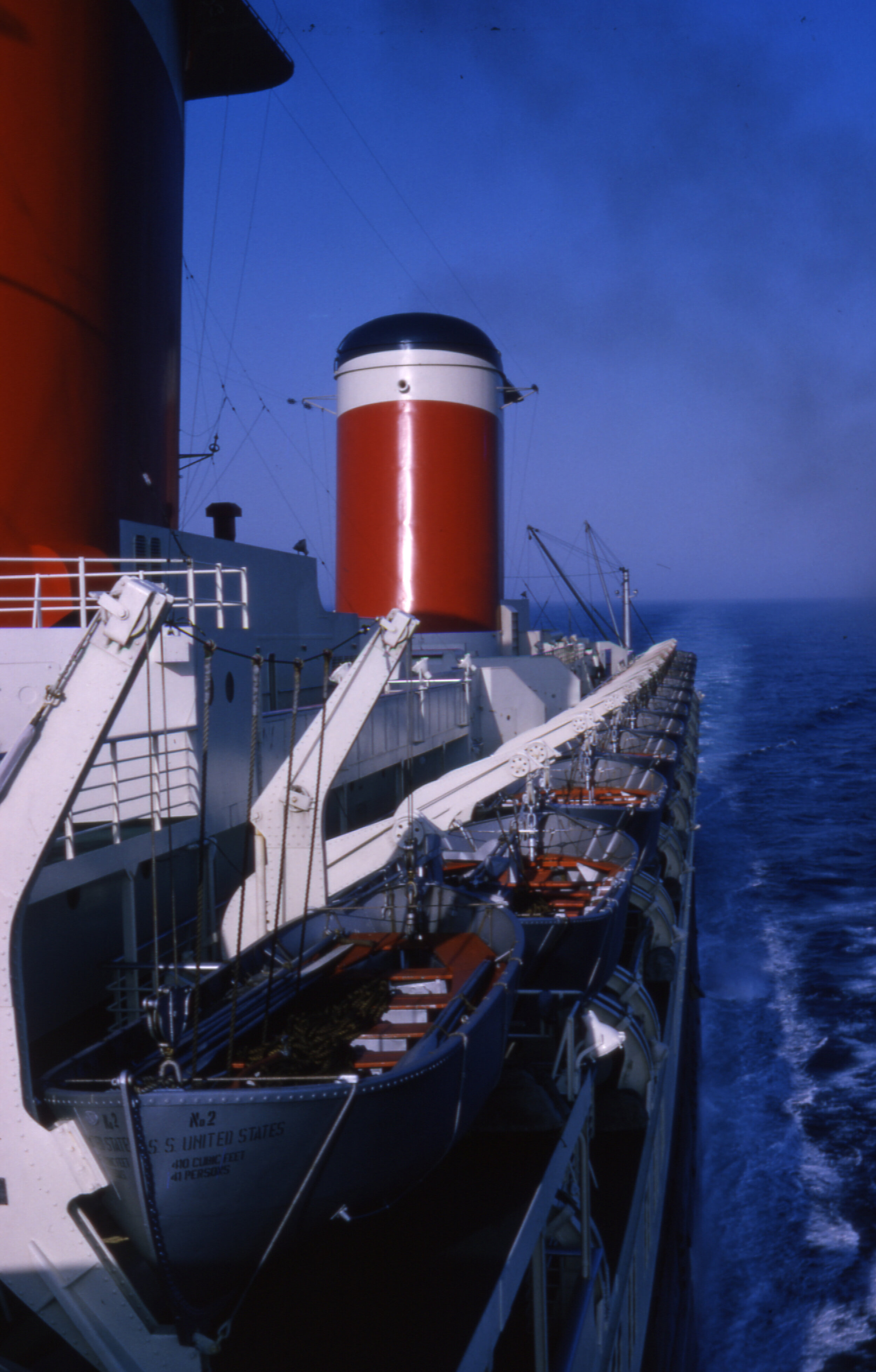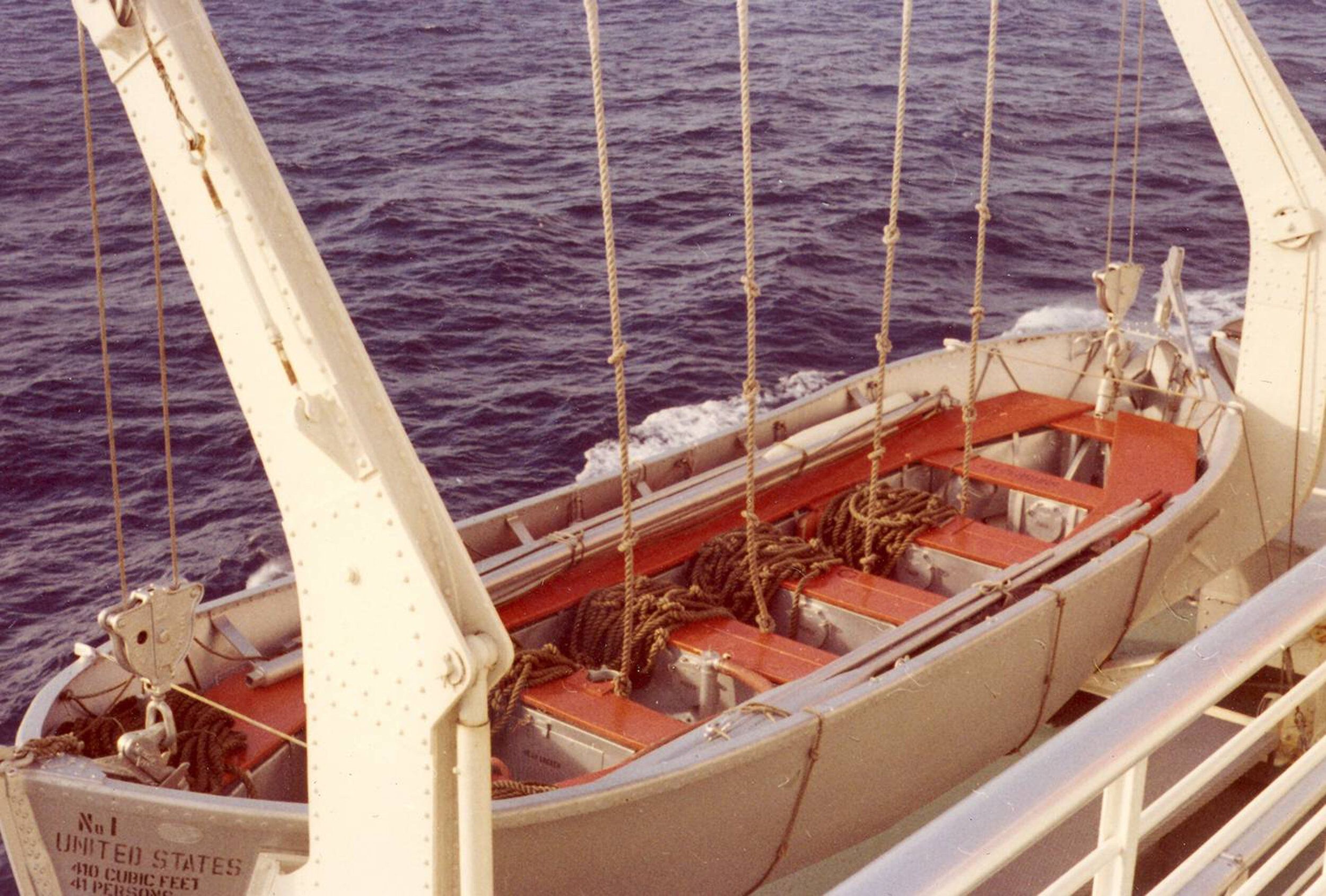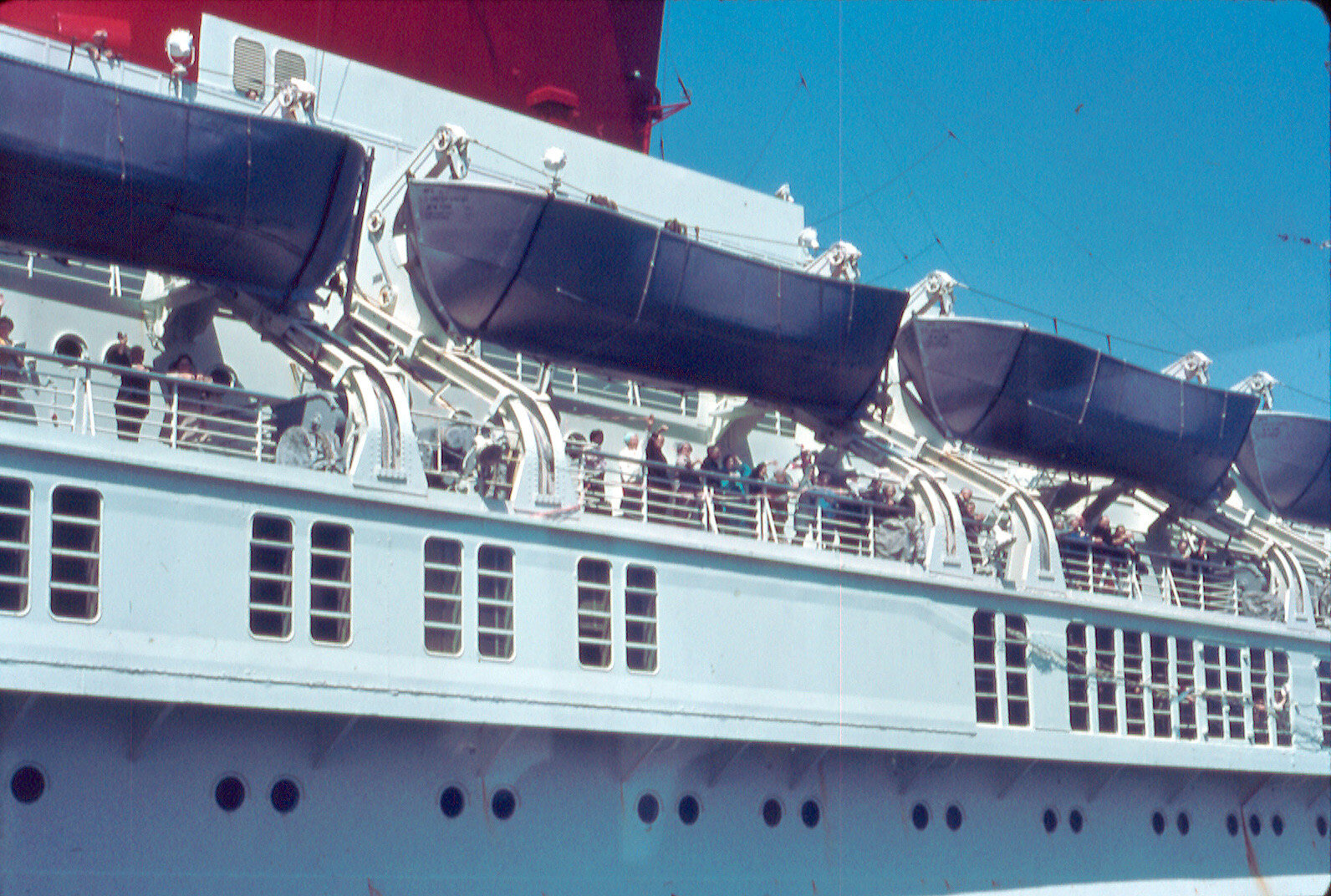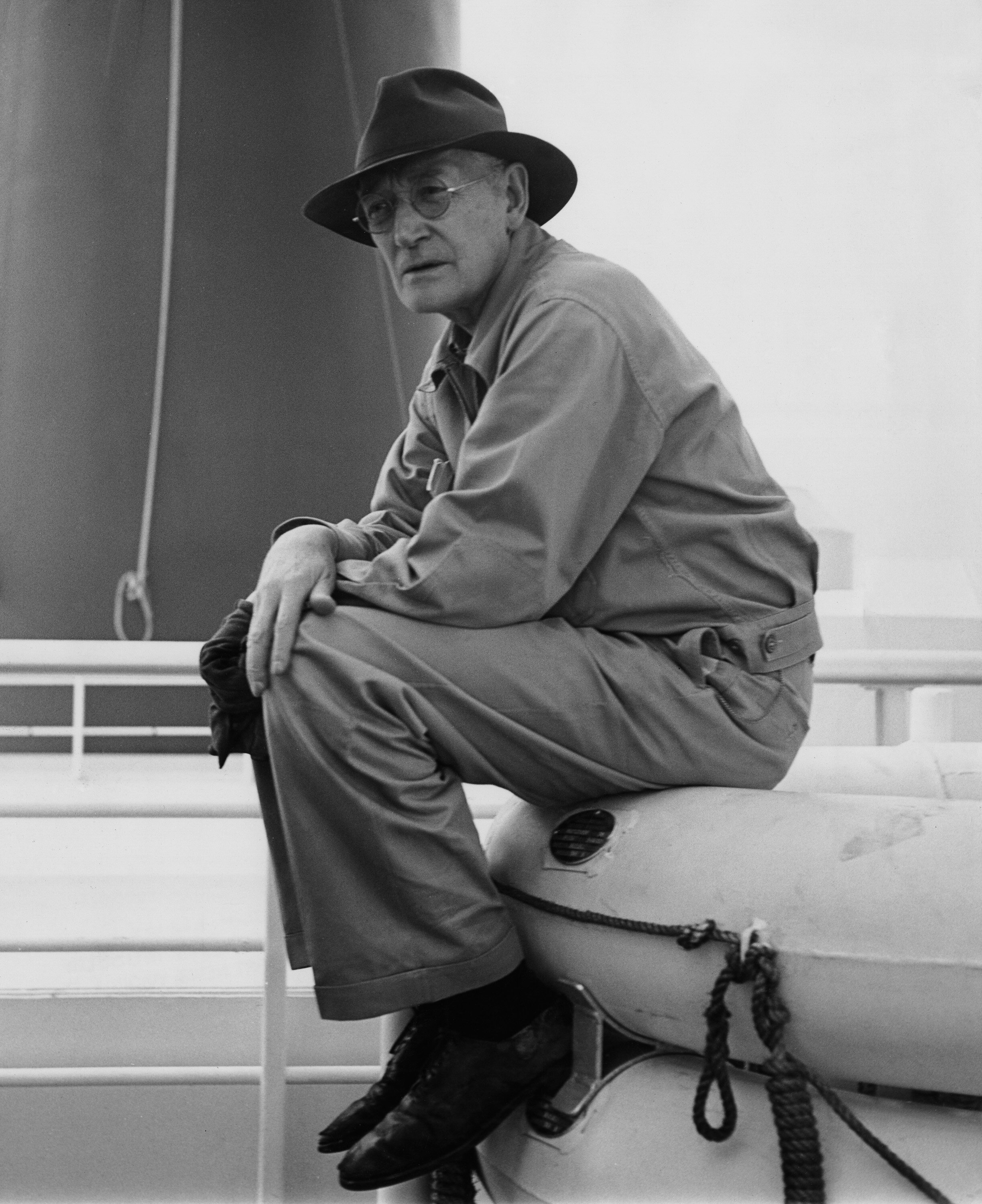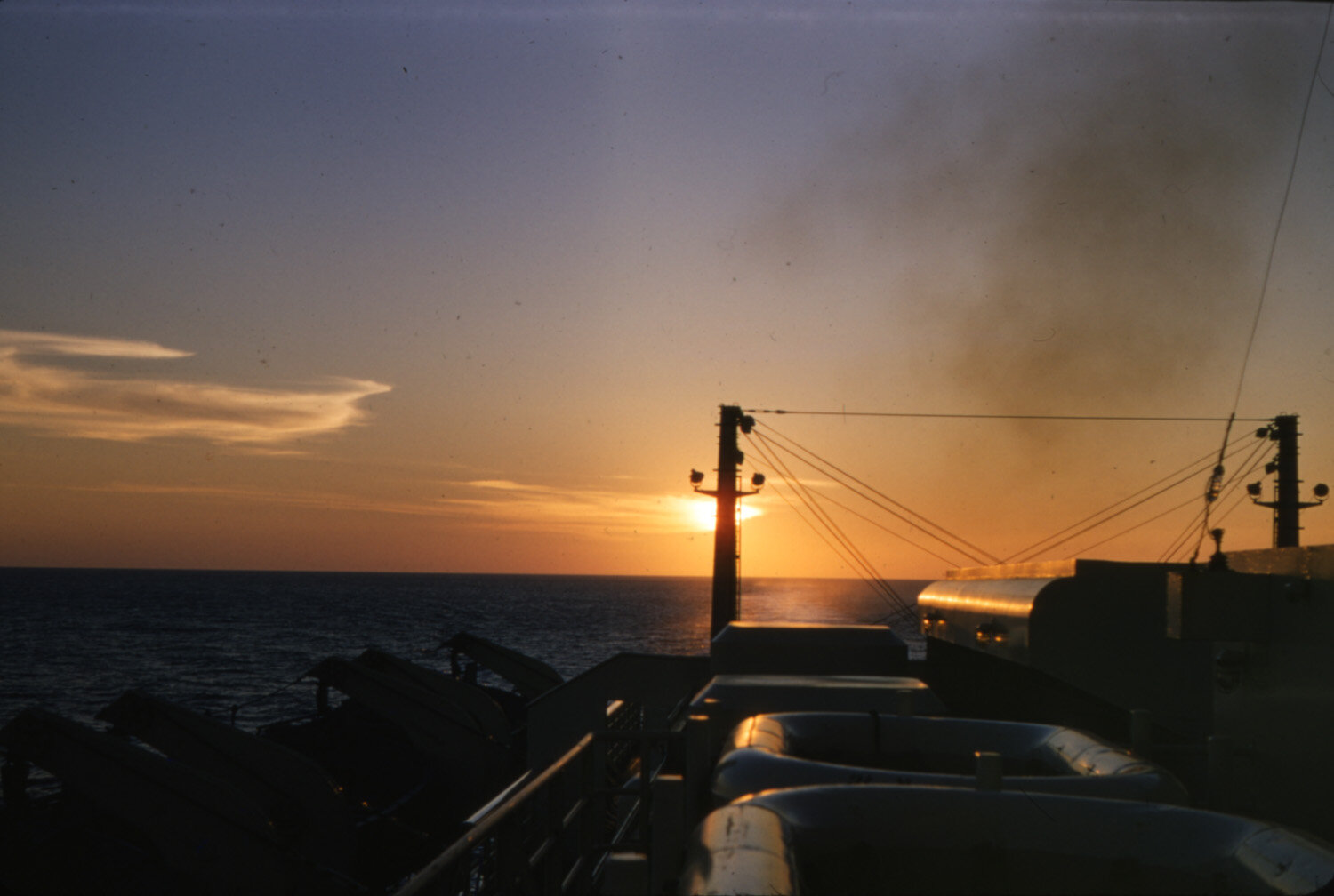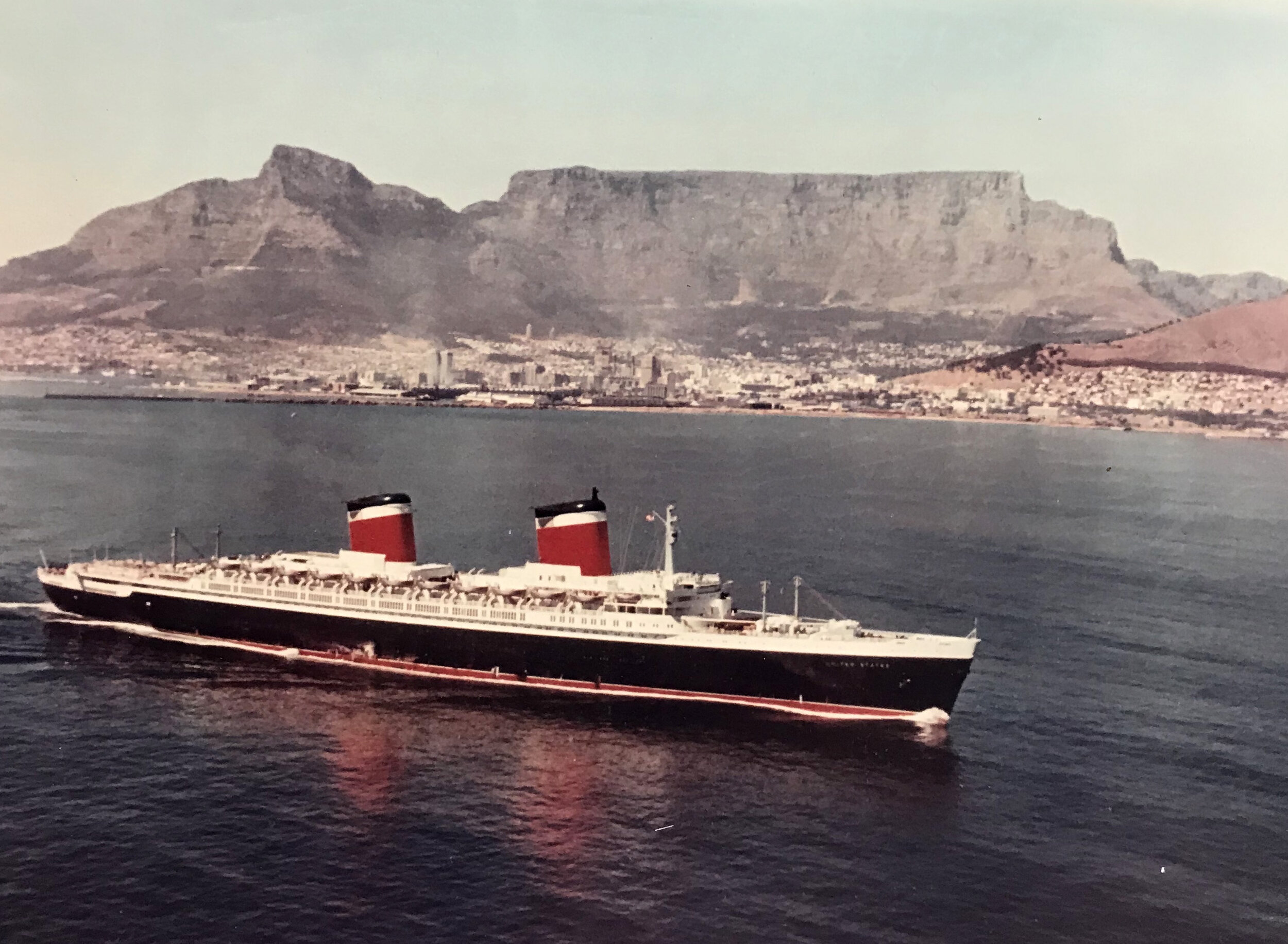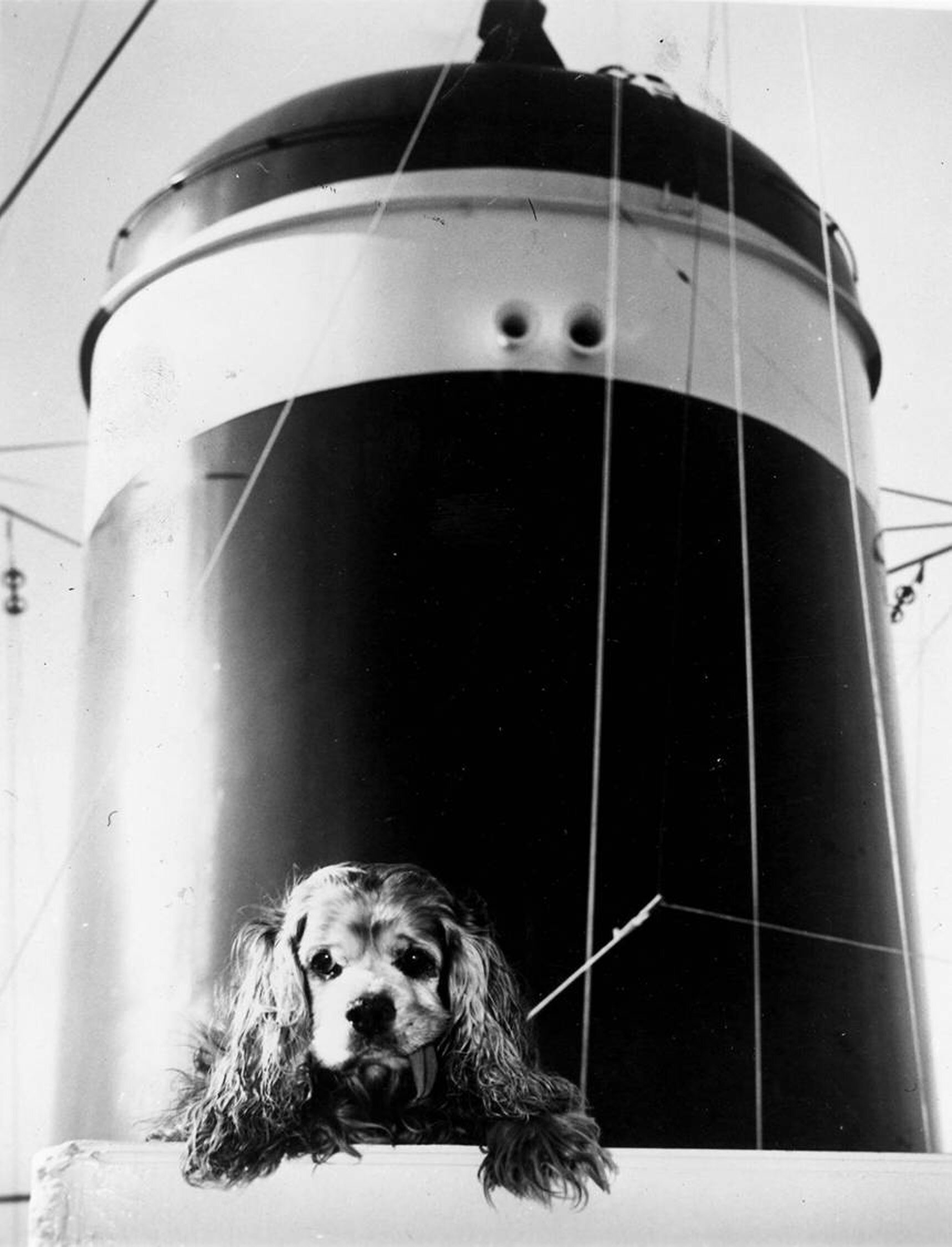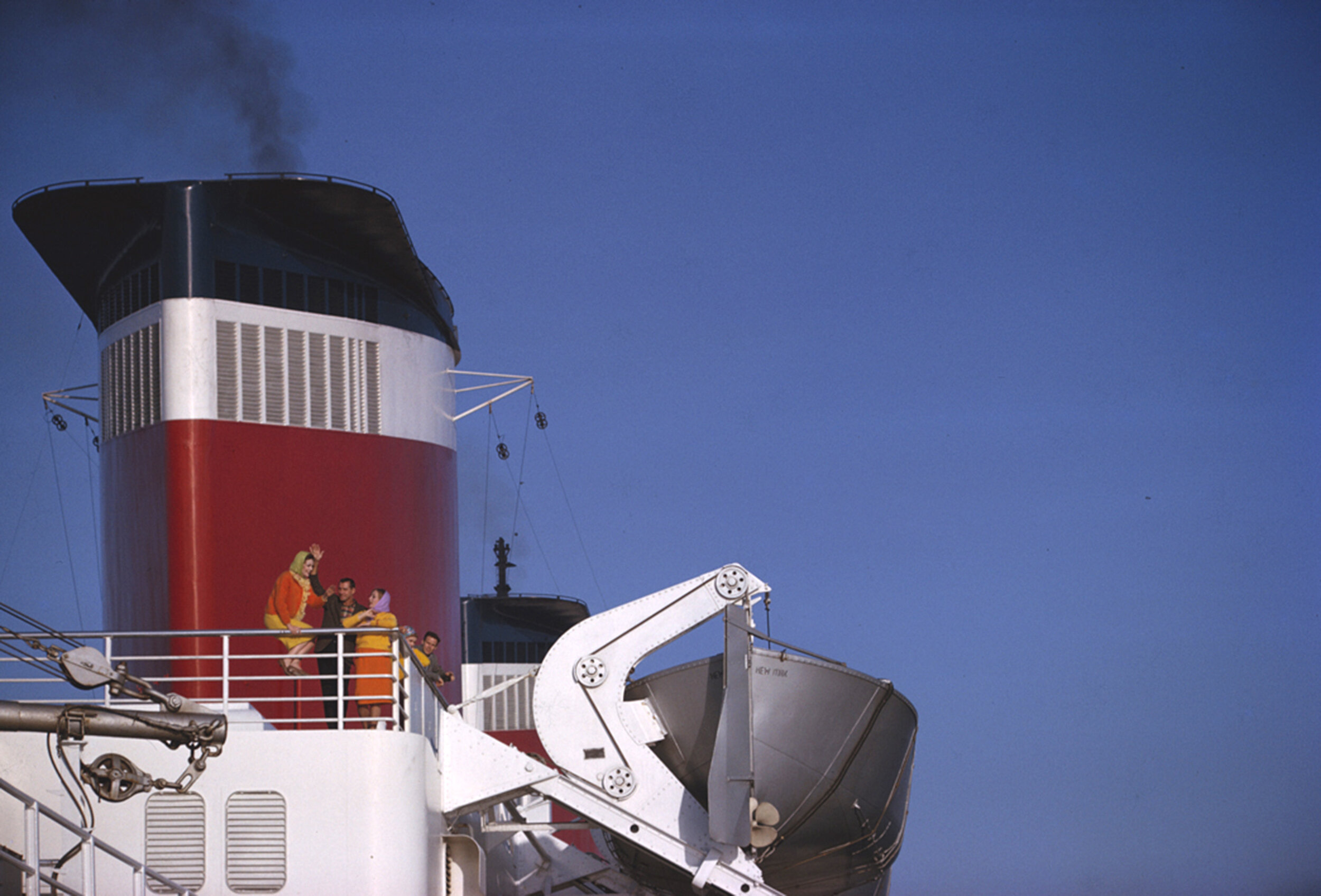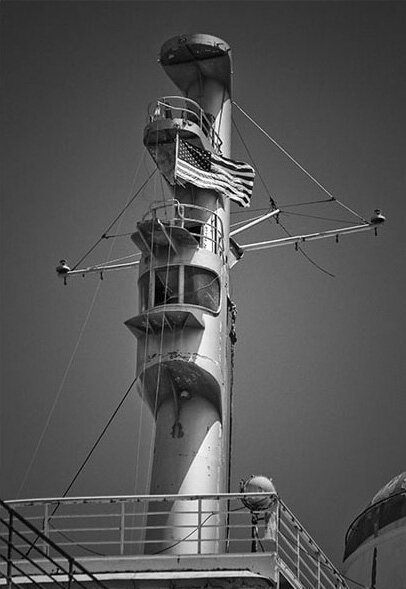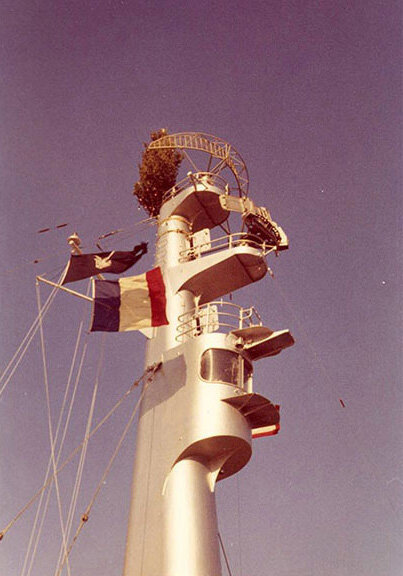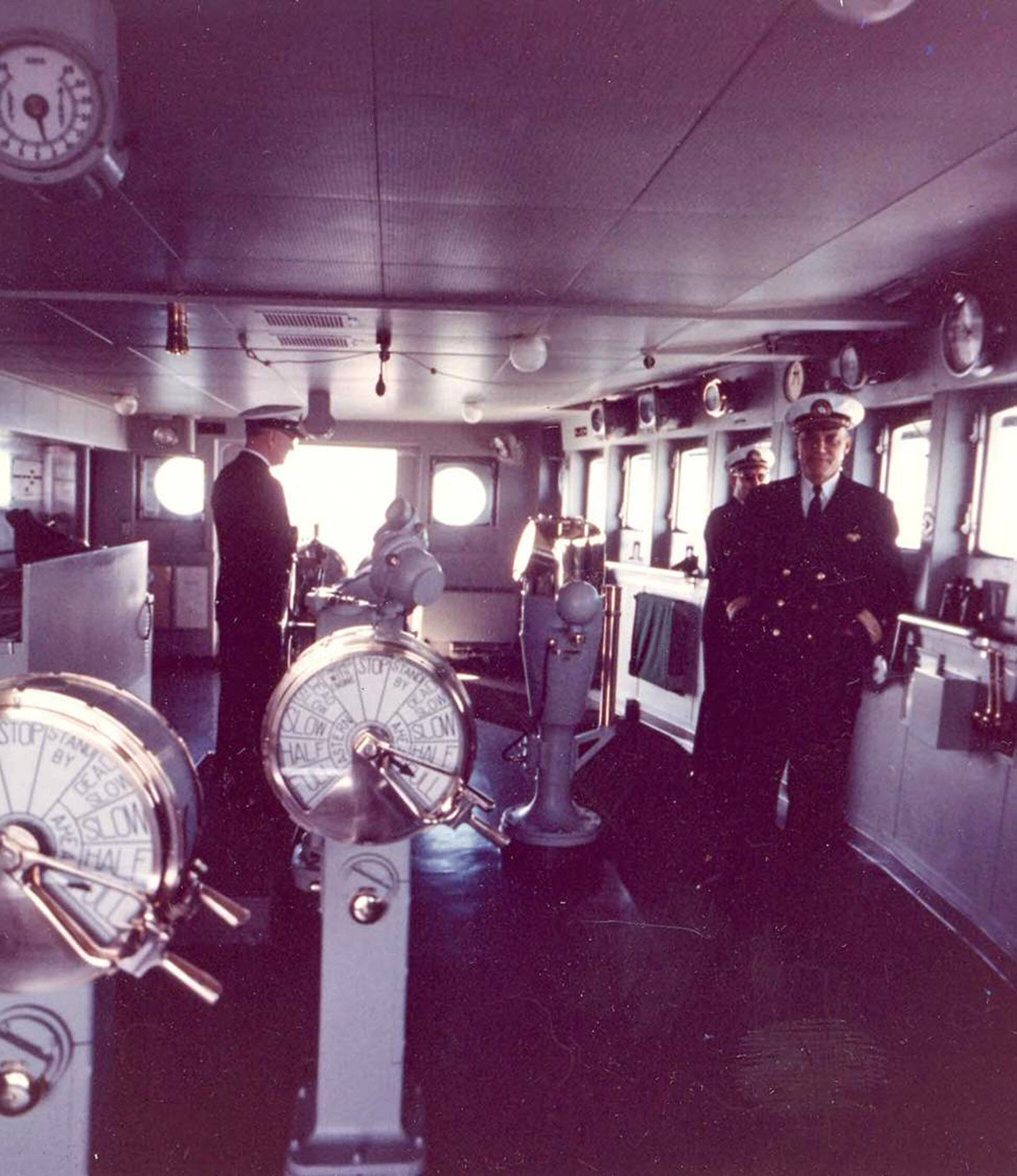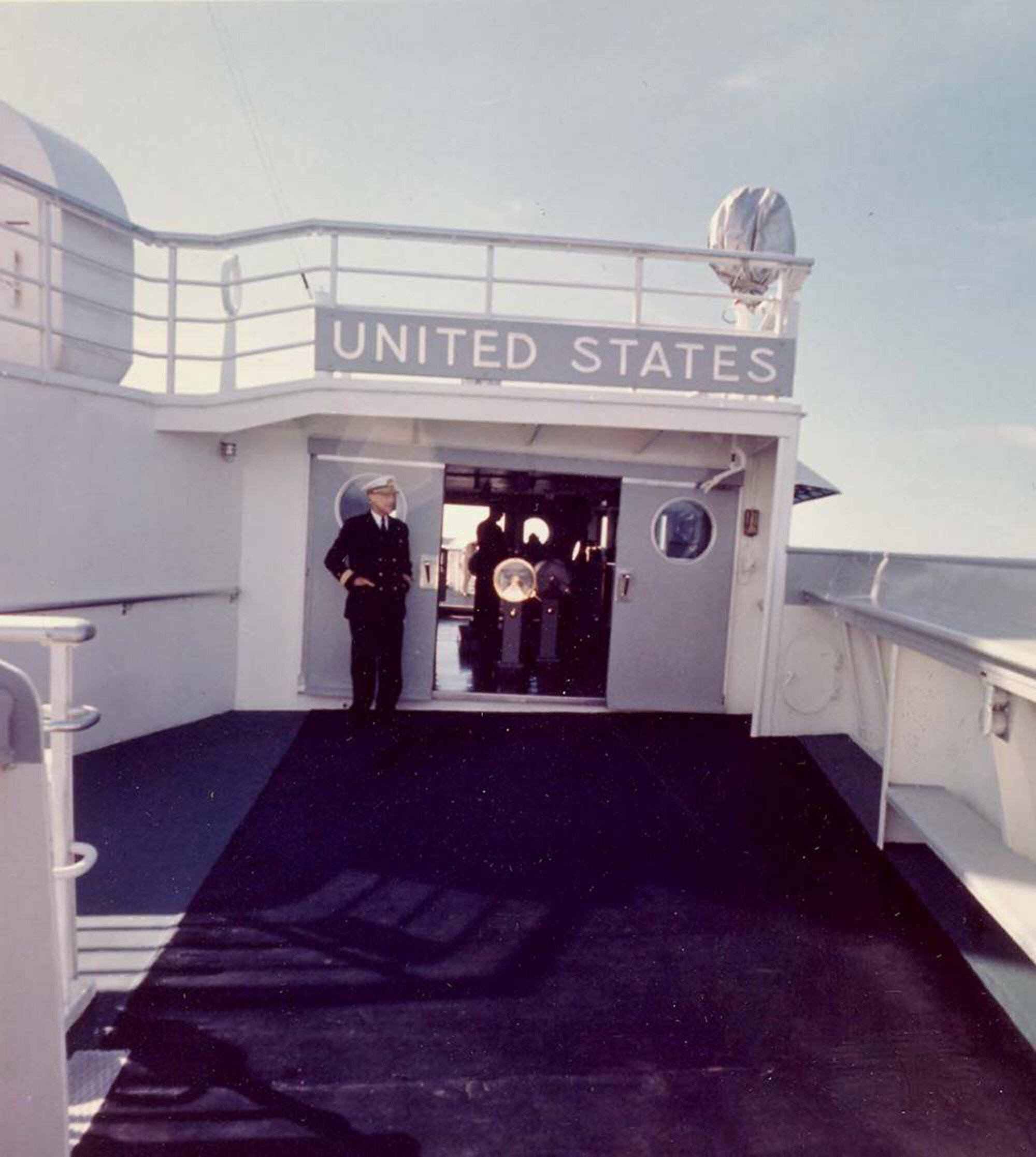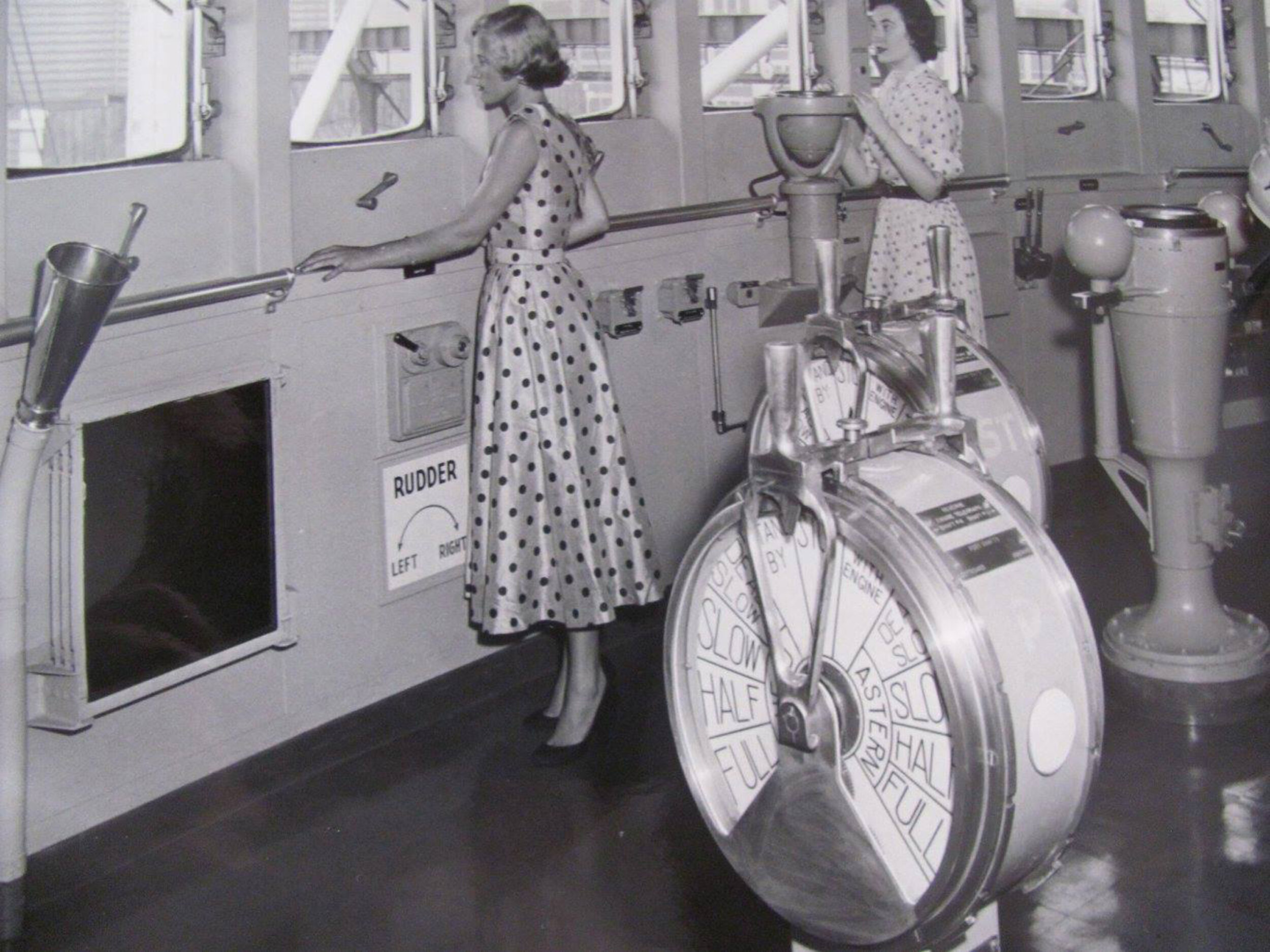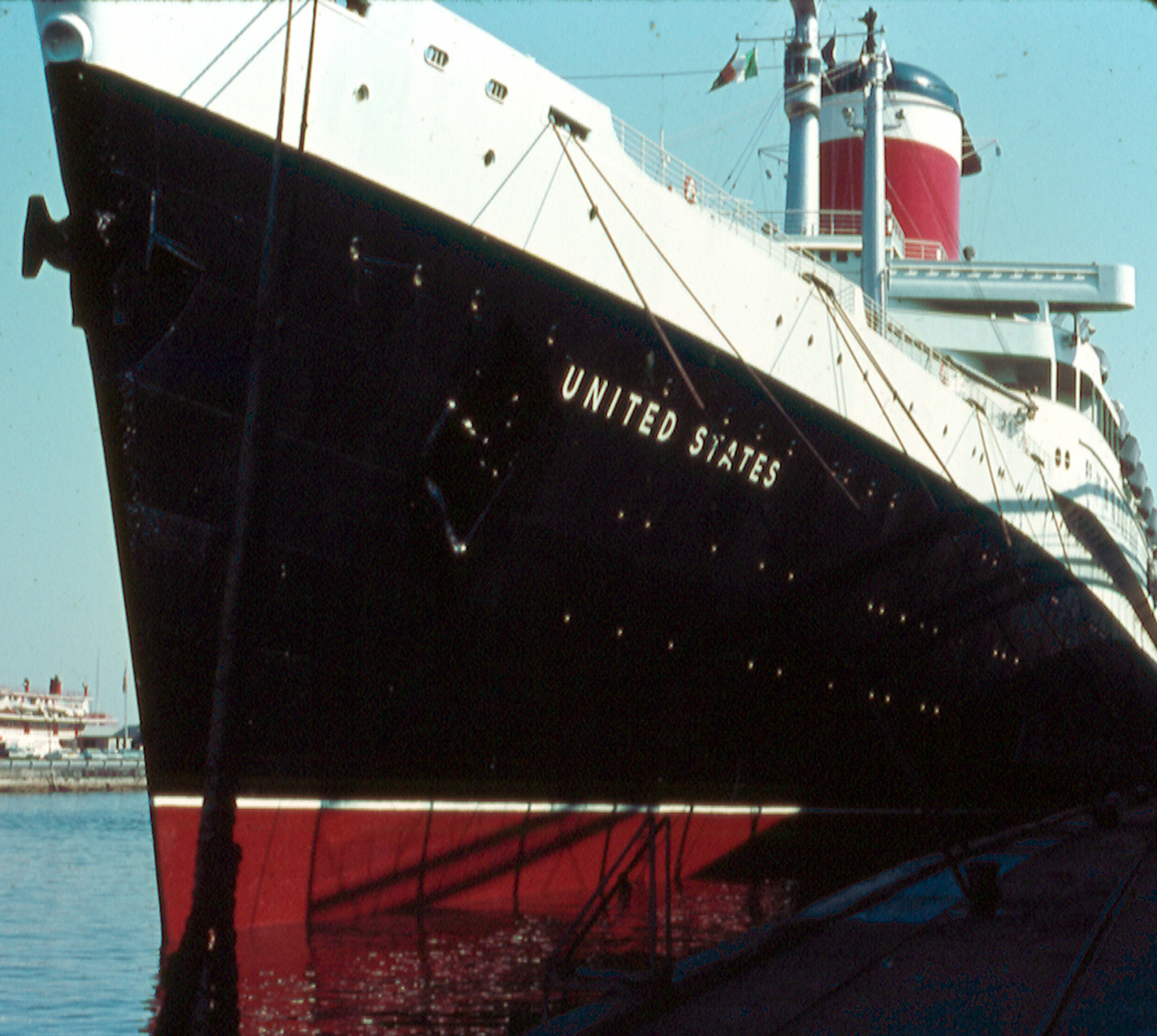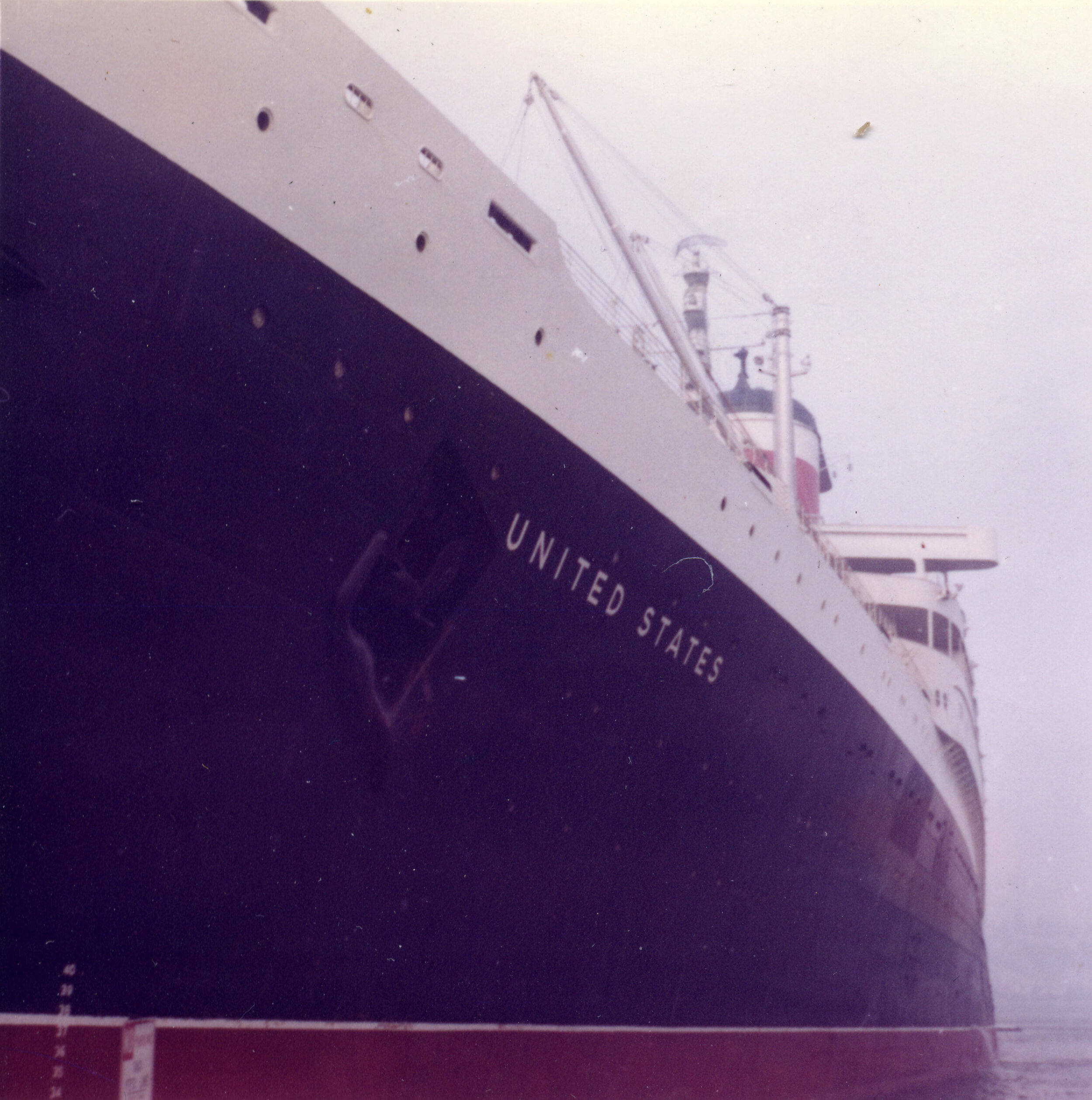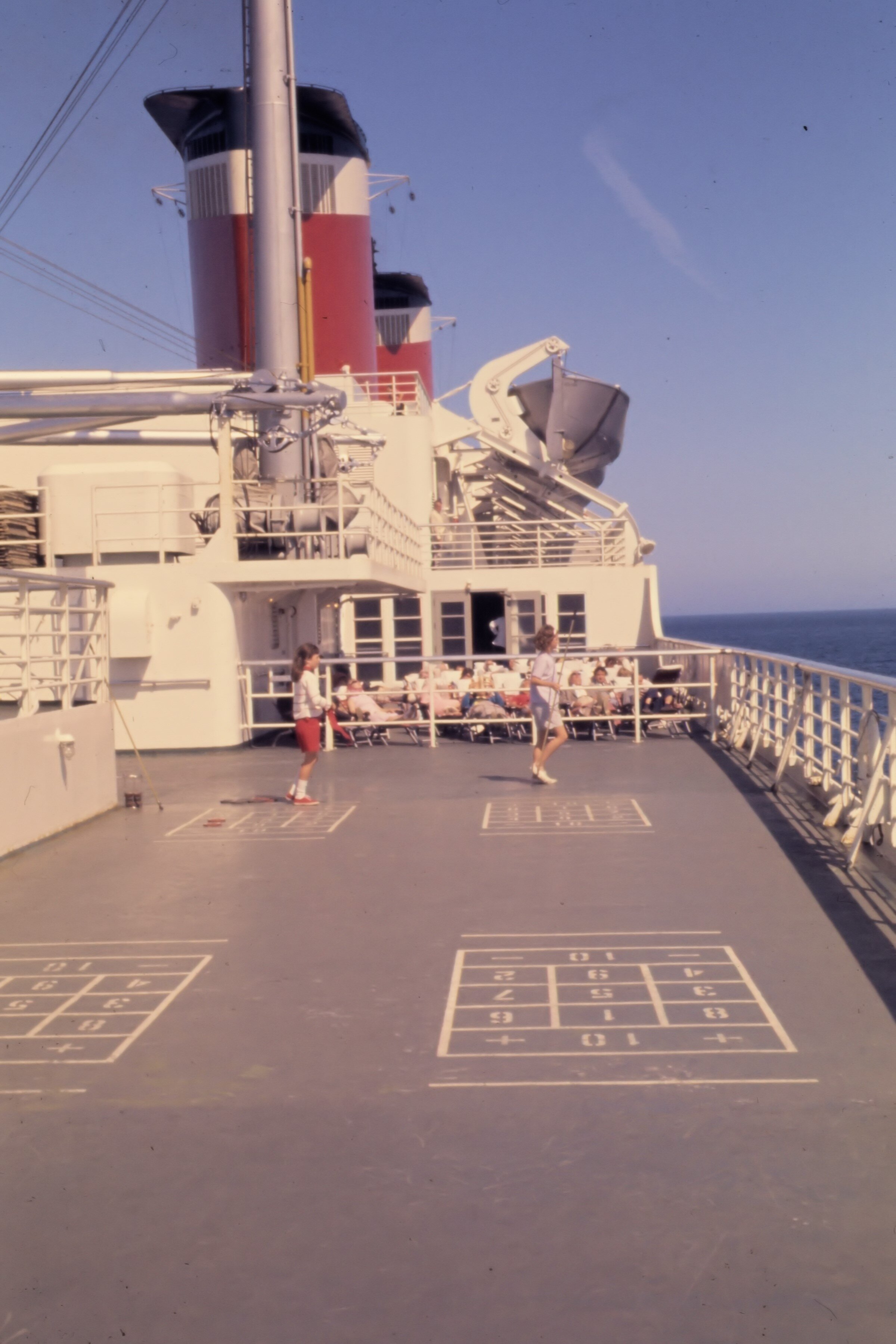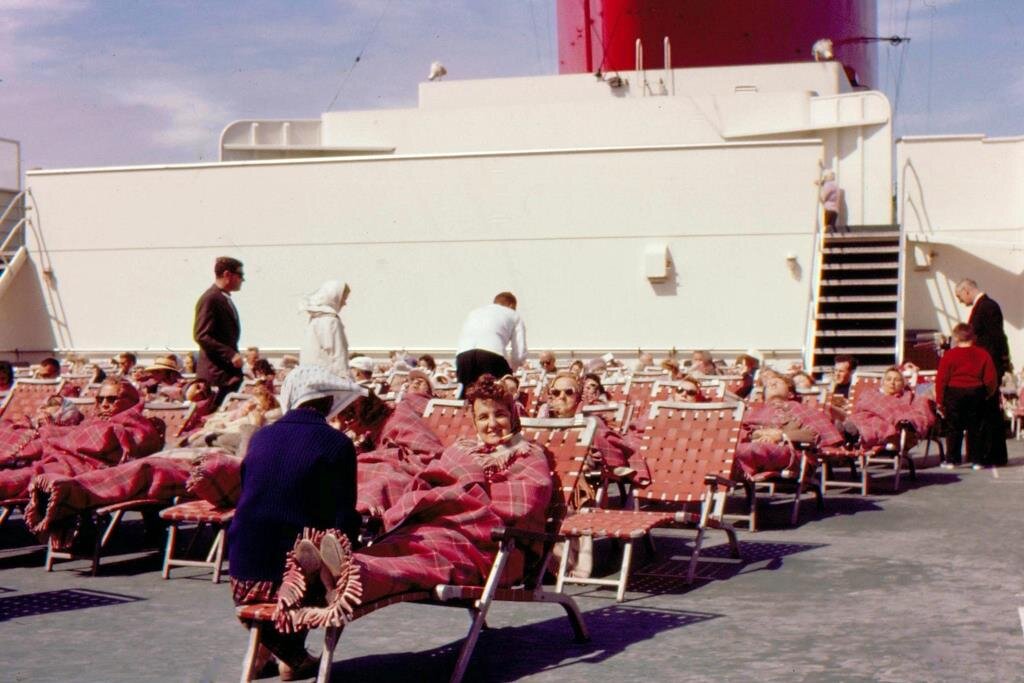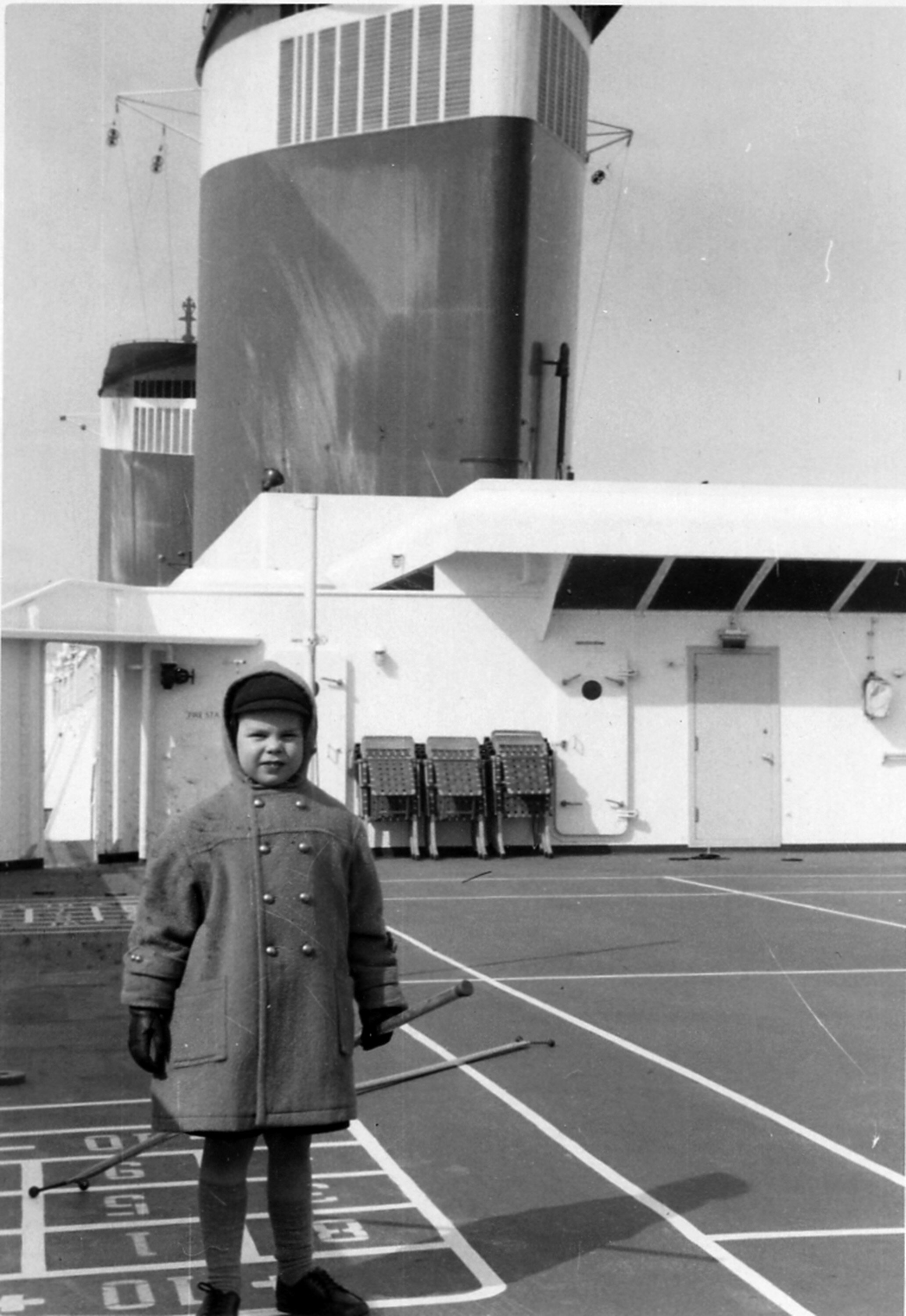The SS United States
The SS United States, the world's fastest ocean liner, isn't just a marvel of technology: she's a living icon of the American dream. She represents the power of freedom, hard work, common purpose, and innovation.
Entirely Made in America by over 3,000 pairs of tireless hands, and with products and components from every state in the nation, the SS United States was a global ambassador and the pinnacle of mid-century maritime design. She debuted in 1952 as the most powerful, modern, and advanced passenger liner ever built, smashing the transatlantic speed record on her maiden voyage. But behind her graceful lines and patriotic flair, she was a national security asset, capable of being transformed into a state-of-the-art, top secret military vessel.
The story of the SS United States is our story. It is the story of the nation’s triumphant emergence after the trauma of World War II. It’s also a story of the glamour of old Hollywood and the advent of mid-century modern art and design. It’s about people from small towns and big cities setting out on journeys to distant shores. It's about immigrants crossing the sea and beginning new lives.
Key Features of the SS United States
1 | rudder
The SS United States' rudder was designed for good maneuverability at high speed. Rudder design was deemed important because the RMS Titanic's relatively small rudder was a contributing factor in that ship's collision with an iceberg and tragic sinking on her maiden voyage in 1912.
2 | propellers
The SS United States was fitted with four propellers — two four-bladed and two five-bladed. This configuration was tested and selected for its superior hydrodynamic performance, and the design was overseen by the pioneering Gibbs & Cox female engineer Elaine Kaplan.
3 | king posts & booms
Four masts called "king posts" were each fitted with two booms — cranes used to haul large cargo in and out of the ship's deep cargo holds when she was in port. In addition to her complement of over 3,000 passengers and crew, the SS United States could carry 148,000 cubic feet of cargo — the equivalent of 37 modern semi trailers.
4 | lifeboats
The SS United States is widely considered the safest passenger ship ever built, in contrast to the "unsinkable" Titanic. She carried far more lifeboats and rafts than were required by law. The SS United States' 24 lifeboats plus her additional rafts could hold 4,060 people — over 1,000 more than the ship itself could hold booked at 100 percent capacity. Welin Davit Boat Company constructed the SS United States’ last line of safety measures: each lifeboat was constructed entirely in aluminum. The aluminum build reduced the weight of the boats, allowing for ease of handling in case on an emergency.
5 | life rafts
In addition to her aluminum lifeboats, the SS United States carried several life rafts stowed on her deck in various locations. In the event of catastrophic damage where half of her lifeboats became unusable (such as the disasters encountered by the RMS Lusitania in 1915 and the SS Andrea Doria in 1956), the SS United States would still have enough rafts and boats to evacuate her entire complement of passengers and crew.
6 | funnels
The SS United States' magnificent red, white and blue funnels remain the tallest ever to be installed on a ship — at 65 feet they are themselves as tall as a six-story building. Their design includes distinctive "wings" in the rear that serve to deflect engine exhaust away from passengers on deck. The funnels were raked sharply backwards to lend the impression of motion and a determination to race. They were designed to be asymmetrical - the aft-most funnel was smaller than the fore-most. The proportions of the painted stripes on the funnels were adjusted accordingly. The forward funnel was 75% red, 10% white and 15% blue; the aft funnel was 70.8% red, 11.7% white, and 17.5% blue.
7 | radar mast
The SS United States was equipped with the latest radar equipment in 1952, which allowed the ship to see the position of other ships and objects in the ocean even when visibility was low (in storms, fog, etc.). Radar was a relatively new technology in 1952 and the SS United States was among the first ocean liners to use it. The radar mast was also one of the highest points on the ship, so in addition to her radar "eyes," a lookout could be stationed there to warn the captain of any danger in the ship's path.
8 | navigation bridge
Effectively the brains of the ship, the navigation bridge was where the captain and his officers would set the ship's course and her speed. The bridge was equipped with a helm compass, engine telegraphs, radar units, magnetic compass, and other controls. Behind the bridge on the port side was the damage control room which contained the controls for the fire alarm systems, watertight and firescreen doors and other emergency systems. Some windows on the front of the bridge were equipped with a type of "windshield wiper" that would allow the crew to see in the event of heavy rain, snow, or ice storms.
9 | anchors
The SS United States’ three massive anchors (the two largest on both sides of her bow, one more at her prow, or the very front) were used to keep the ship from moving if she was ever stopped and not moored to a dock. They were frequently used when she was on cruises to tropical climates and the water in her ports of call was too shallow for her to dock. The SS United States would anchor offshore and smaller excursion boats would ferry the passengers to land.
10 | sports deck
The SS United States featured extensive exterior deck space, some of which was set up specifically for deck games. Shuffleboard was popular on the ship, as was "deck tennis" similar to regular tennis in that it involved a net, but passengers would toss a rubber disk back and forth instead of hitting a ball with rackets. On most ships, wooden pucks were used on the shuffleboard courts, but in accordance with the SS United States' strict rule preventing combustible materials, the Big U's pucks were made of plastic. Because of the ship's great speed, the SS United States had large wind deflectors so that passengers on the sports deck would not be uncomfortable.
